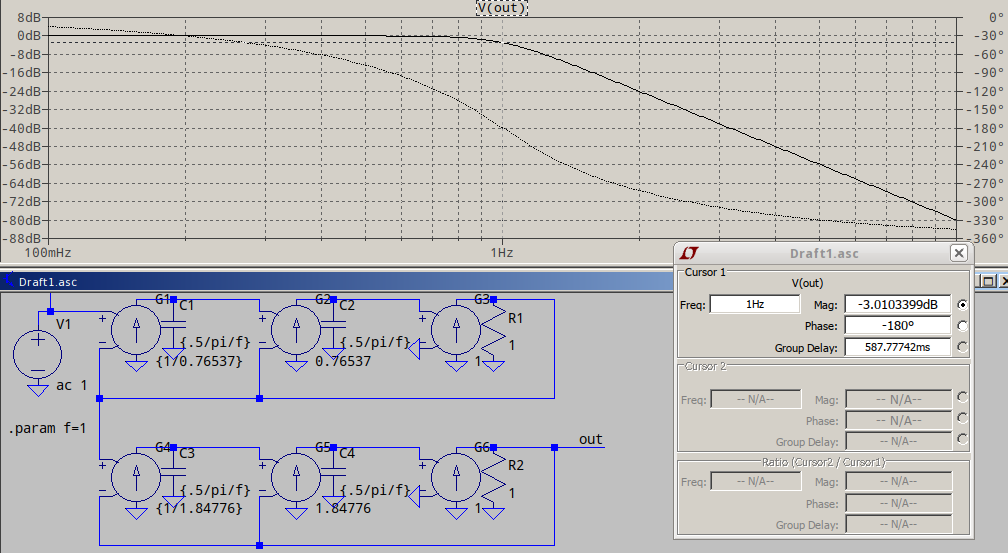I'm new to SPICE, and I have a question about SPICE commands and references. I've been using LTspice to design a multistage amplifier, and I am interested in plotting out the outputs of each stage, normalized around zero, without having to manually construct test points (with capacitors to drop the DC component). When I run a transient analysis, I can plot the output nodes as below:

The eagle-eyed among you may notice a bit of distortion in the waveforms from the original sine wave, and that is what I'm attempting to isolate. As a diagnostic tool, I'd like to be able to plot each node voltage, minus the calculated DC operating point for each respective node. Ideally, I'd like to see something like this:

Putting each wave on top of the other like this helps me see the progression of distortion through each stage.
What I would like to find is a built-in function in SPICE or LTspice that allows me reference the previously-calculated DC operating point of a node, so that I can just plot a function something like V(n007)-DC(n007), and have it plot about zero instead of about the operating point. Is there a function in SPICE to reference the DC operating point of a node? If not, would it be possible to write one? As a bonus, is it possible to normalize the waveforms to compare them at similar scales, despite their different amplitudes?



